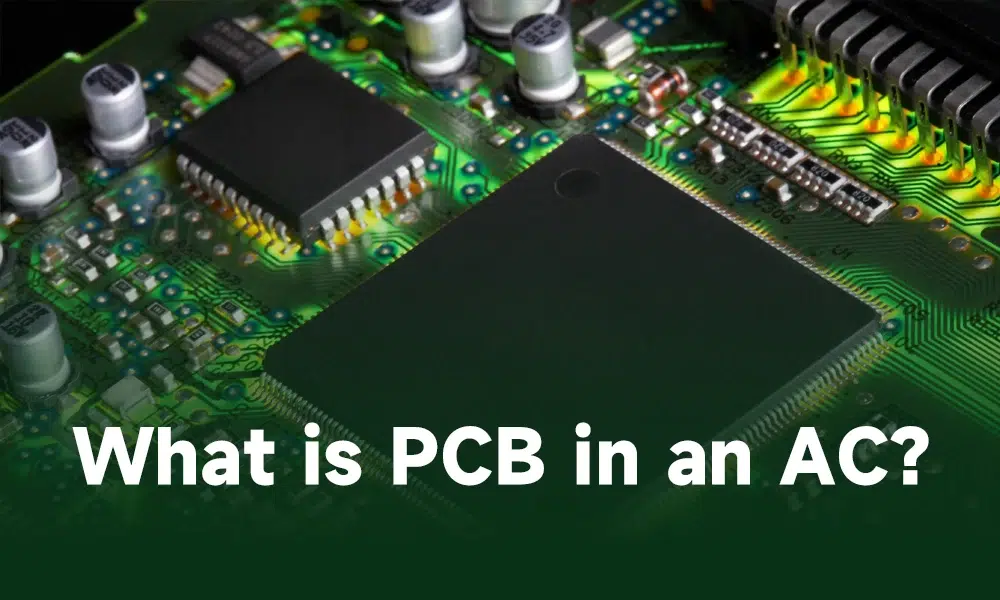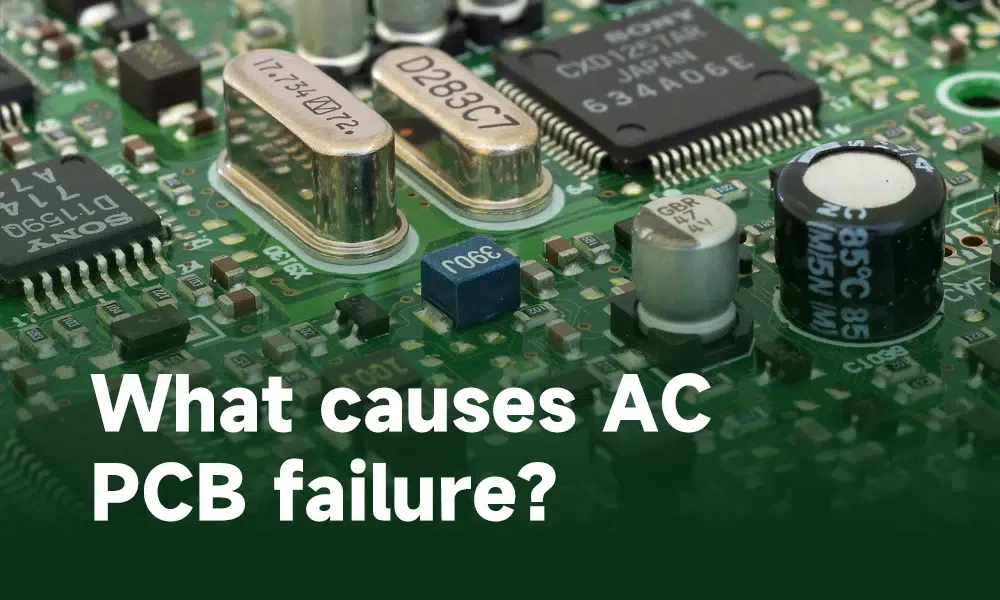Air conditioners (AC) are essential appliances commonly found in households, relying on a multitude of components to operate efficiently. One of these vital components is the AC PCB.
What is PCB in an AC?

This critical component ensures that the AC functions efficiently, delivering the desired cooling or heating while also overseeing safety features and error detection. Without a properly functioning PCB, the AC unit would struggle to maintain the desired climate conditions, emphasizing the significant role this component plays in the overall performance of the system.
How many PCBs are there in AC?
Typically, there are two main Printed Circuit Boards (PCBs) in an air conditioning (AC) system. The first is the indoor unit PCB, which is responsible for controlling the temperature, fan speed, and mode settings. This PCB manages the unit’s indoor components, such as the evaporator coil and blower fan.
The second is the outdoor unit PCB, which oversees the operation of critical components like the compressor and condenser fan. These two PCBs work in harmony to ensure the AC functions optimally. The indoor and outdoor units collaborate to maintain the desired climate conditions, making the dual PCB setup a fundamental aspect of most AC systems’ efficient cooling and heating processes.
How to design AC PCB?
Creating an AC PCB necessitates a deep understanding of electronics and HVAC systems. Manufacturers employ computer-aided design (CAD) software to meticulously craft PCB layouts. This intricate design process involves carefully selecting components, establishing connections, as well as determining the power specifications necessary for the AC unit to operate at its best.
What causes AC PCB failure?

Electrical Surges and Power Fluctuations
Powerful electrical surges, lightning strikes, or sudden fluctuations in power can introduce dangerously high voltage into the AC’s electrical system. This influx of voltage poses a significant threat to the sensitive electronic components on the PCB, potentially resulting in their failure. To safeguard against such risks, it is imperative to implement surge protection devices. These devices play a crucial role in mitigating the potential damage caused by voltage spikes, ensuring the longevity as well as reliability of the system.
Overheating
Exposure to prolonged high temperatures, whether within or outside the unit, can result in the overheating of the AC PCB. This, in turn, can lead to the degradation of components, failures in solder joints, or even the warping of the board itself. Ultimately, such issues can cause the PCB to malfunction.
Dust and Debris Accumulation
Over time, dust and debris can accumulate on the AC PCB, forming insulation around components. This insulation can lead to overheating as well as compromise the overall performance of the PCB. Additionally, the accumulation can cause short circuits or corrosion, further impacting its functionality.
Aging and Wear-and-Tear
As the AC unit ages, the PCB is susceptible to wear-and-tear. Components may degrade, solder joints can weaken, and connectors may become loose, all of which contribute to PCB failure. Regular maintenance and timely replacement of aging components can extend the PCB’s lifespan.
Moisture and Corrosion
Moisture infiltration, whether due to humidity or water leaks, can corrode the AC PCB. Corrosion not only disrupts the electrical pathways but can also cause short circuits, rendering the PCB inoperable. Proper sealing and protection against moisture are vital for preventing this type of failure.
How to check the air conditioner PCB?
If your AC is malfunctioning, it’s important to check the PCB as a potential source of the problem. You can start by inspecting for visible damage, loose connections, or burnt components of AC PCB. However, it’s advisable to leave in-depth troubleshooting to a professional technician to avoid further damage or personal injury.
How do I know if my AC circuit board is bad?
Inconsistent Temperature Control:
When your AC struggles to maintain the desired temperature or exhibits uneven cooling, it could be a sign of a malfunctioning PCB. The PCB regulates the compressor and fan speeds, and if it fails, temperature control becomes erratic.
Unresponsive Control Panel:
If you observe that the control panel of your AC is unresponsive to your commands or experiences a considerable delay in executing them, the culprit may be the PCB. This encompasses problems in AC PCB such as buttons failing to register inputs or the display not functioning properly.
Frequent and Rapid Cycling:
Frequent on-and-off cycling of your AC can be indicative of PCB problems. The circuit board plays a role in managing the compressor’s operation, and if it malfunctions, the AC may cycle too frequently.
Error Codes or Display Issues:
Modern AC units often display error codes to indicate problems. If your AC shows unusual error codes or messages, it could be a sign of PCB issues. Additionally, a malfunctioning AC PCB can lead to display problems, such as flickering, displaying gibberish, or not showing the right information.
Strange Noises or Odors:
A defective PCB can cause the AC unit to generate peculiar noises as well as release unfamiliar odors. These occurrences may arise from the PCB’s inability to effectively regulate different components, resulting in mechanical problems.
If you notice any of these problems, it is crucial to have a skilled technician inspect your AC unit to identify & resolve the issue promptly.

Can the AC PCB board be repaired?
A malfunctioning AC PCB can be repaired rather than replaced in many cases, saving you both time and money. However, the feasibility of repair depends on the extent of the damage and the availability of replacement components.
AC PCB board repair near me
If you’re in need of AC PCB repair services, it’s advisable to seek professional assistance from a local HVAC technician or repair center. Many specialized technicians offer PCB repair services. You can start by searching online or asking for recommendations from friends and family to find a reputable repair service near you.
Conclusion
The Printed Circuit Board (PCB) is a vital component of your air conditioner, playing a central role in its operation. Understanding the functions of the PCB, its common causes of failure, and the signs of a bad PCB can help you maintain your AC unit effectively.
When faced with a malfunctioning AC PCB, professional repair services can often restore it to optimal performance, ensuring your comfort during hot summer months.
In an air conditioner (AC), a PCB, or Printed Circuit Board, is the electronic control center responsible for coordinating and regulating the various functions of the unit. Think of it as the AC's brain.
Typically, there are two main Printed Circuit Boards (PCBs) in an air conditioning (AC) system: the indoor unit PCB and outdoor unit PC
Electrical Surges and Power Fluctuations
Overheating
Dust and Debris Accumulation
Aging and Wear-and-Tear
Moisture and Corrosion










